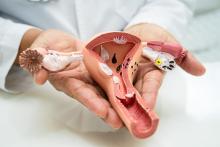Recent Publications

Tomer Meirson: Safety of BRAF+MEK Inhibitor Combinations: Severe Adverse Event Evaluation (Cancers (Basel) . )
The selective BRAF and MEK inhibitors (BRAFi+MEKi) have substantially improved the survival of melanoma patients with BRAF V600 mutations. However, BRAFi+MEKi can also cause severe or fatal outcomes. We aimed to identify and compare serious adverse events (sAEs) that are significantly associated with BRAFi+MEKi.

Baruh Polis: Striatal Cholinergic Interneurons Exert Inhibition on Competing Default Behaviors Controlled by the Nucleus Accumbens and Dorsolateral Striatum (Eur J Neurosci.)
With repeated practice, learned actions become more skilled, and eventually highly stereotypical. This transition is accompanied by a shift in striatal control over behavior from ventral and dorsomedial striatum to dorsolateral striatum. The cholinergic interneurons (CINs) in the striatum are central to striatal computation. Yet, their role in the transition from motivated to stereotypic behavior is still unclear. In this study we examined whether CINs contribute to the competition between both control systems.

Noa Abrahami, Ido Izhaki, Johnny S Younisa: Is there a difference in ovarian reserve biomarkers and ovarian response between the right and left ovaries? (Reprod Biomed Online .)
Is there a difference in ovarian reserve biomarkers and ovarian response between the right and left ovaries of infertile women undergoing IVF treatments?

Arik David, Jacob Bornstein: Evaluation of Long-Term Surgical Success and Satisfaction of Patients After Vestibulectomy (J Low Genit Tract Dis.)
Vestibulectomy is one of the only proven therapeutic treatments for provoked vulvodynia (PVD). However, little is known about long-term surgical success. Patients who underwent vestibulectomy between 1991 and 2003 were interviewed to assess frequency of intercourse and degree of pain during various activities, as well as satisfaction with and willingness to recommend the surgery. We also examined the outcome relation to PVD type being primary or secondary. Differences in pain over time were assessed using a paired-sample t test or a Wilcoxon signed-rank test.

Tamer Jamal, Amjad Shalabi, Liza Grosman-Rimon, Diab Ghanim, Offer Amir, Erez Kachel: Veno-arterial Extracorporeal Membrane Oxygenation for Electrical Injury Induced Cardiogenic Shock Support: A Case Report (J Cardiothorac Surg.)
High voltage electrical injury (HVEI) of more than 1000 V is a potentially devastating form of a multisystem injury associated with high morbidity and mortality. We present the first case of veno-arterial extracorporeal membrane oxygenation (VA-ECMO) as a life saving device for treating a patient with severe cardiogenic shock after a high voltage electrical injury.

Chaim Putterman: Author Correction: Comprehensive Aptamer-Based Screening Identifies a Spectrum of Urinary Biomarkers of Lupus Nephritis Across Ethnicities (Nat Commun .)
Erratum for
Comprehensive aptamer-based screening identifies a spectrum of urinary biomarkers of lupus nephritis across ethnicities.
Rita Nosenko, Atara Uzan-Yulzari, Omry Koren: Alterations in the Gut Microbiome in the Progression of Cirrhosis to Hepatocellular Carcinoma (mSystems .)
Hepatocellular carcinoma (HCC) is the second leading cause of cancer-related mortality worldwide. While cirrhosis is the main risk factor for HCC, the factors influencing progression from cirrhosis to HCC remain largely unknown. Gut microbiota plays a key role in liver diseases; however, its association with HCC remains elusive. This study aimed to elucidate microbial differences between patients with HCC-associated cirrhosis (HCC-cirrhosis) and cirrhotic patients without HCC and healthy volunteers and to explore the associations between diet, lifestyle, and the microbiome of these patients.

Chaim Putterman: Upregulation of Proinflammatory Bradykinin Peptides in Systemic Lupus Erythematosus and Rheumatoid Arthritis (J Immunol . )
Our recent study has implicated bradykinin (BK) signaling as being of pathogenic importance in lupus. This study aims to investigate the biomarker potential of BK peptides, BK and BK-des-arg-9, in lupus and other rheumatic autoimmune diseases.

Nativ Weisz Shabtay, Ohad Ronen: Level IV Neck Dissection as an Elective Treatment for Oral Tongue Carcinoma-A Systematic Review and Meta-Analysis (Oral Surg Oral Med Oral Pathol Oral Radiol .)
The purpose of our systematic review was to investigate the prevalence of level IV involvement and skip metastases in patients with clinically negative neck (cN0) oral tongue squamous cell carcinoma (OTSCC).

Chaim Putterman: Are Lupus Animal Models Useful for Understanding and Developing New Therapies for Human SLE? (J Autoimmun .)
Highlights
• Similar therapeutic and immunological effects are observed in human and murine SLE studies.
• Studies with belimumab and rituximab treatment reveal resistant B cell populations, present in both human and murine SLE.
• CyTOF immunophenotyping can identify potential SLE patient clusters more likely to respond to specific therapies.
• Testing in lupus animal models remains an important avenue in SLE drug development.
Sivan Spitzer-Shohat, Jumanah Essa-Hadad, Mary Cj Rudolf: Development of a Novel Social Incubator for Health Promoting Initiatives in a Disadvantaged Region (BMC Public Health)
Bottom-up approaches to disparity reduction present a departure from traditional service models where health services are traditionally delivered top-down. Raphael, a novel bottom-up social incubator, was developed in a disadvantaged region with the aim of 'hatching' innovative health improvement interventions through academia-community partnership.
Community organizations were invited to submit proposals for incubation. Selection was made using the criteria of innovation, population neediness and potential for health impact and sustainability. Raphael partnered with organizations to pilot and evaluate their intervention with $5000 seed-funding. The evaluation was guided by the conceptual framework of technological incubators. Outcomes and sustainability were ascertained through qualitative and quantitative analysis of records and interviews at 12 months and 3-5 years, and the Community Impact of Research Oriented Partnerships (CIROP) questionnaire was administered to community partners.

Johnny S Younis, Rula Iskander: Does an Association Exist Between Menstrual Cycle Length Within the Normal Range and Ovarian Reserve Biomarkers During the Reproductive Years? A Systematic Review and Meta-Analysis (Hum Reprod Update.)
Regular menstrual cycling during the reproductive years is an indicator of spontaneous ovulation but sometimes falsely perceived as an indicator of preserved fertility. In contrast, menstrual cycle shortening, a physiologic occurrence preceding the menopausal transition, is not usually perceived as an indicator of decreased ovarian reserve in the general population. The individual decrease in menstrual cycle length (MCL) might represent a sensitive biomarker of diminishing ovarian reserve. The aim of this systematic review and meta-analysis is to examine the possible association between MCL in regularly cycling women (21-35 days) and ovarian reserve tests (ORT), fecundability in natural cycles and IVF outcomes.

Wisam Sbeit , Anas Kadah, Amir Mari, Tawfik Khoury: The Interplay Between Gastrointestinal and Cardiovascular Diseases: A Narrative Review Focusing on the Clinical Perspective (Eur J Gastroenterol Hepatol .)
Both cardiovascular and gastrointestinal disorders represent considerable health burden on community clinics and hospitals with overwhelming economic cost. An overlap in the occurrence of these disorders is encountered in daily practice. Both affect each other in bidirectional manner through several mechanisms including altered hemodynamics, systemic inflammation, bacterial overgrowth and interactions and adverse effects of medications. In addition, to the known overlap in the symptoms occurrence of upper gastrointestinal tract diseases and cardiovascular diseases (CVDs). Awareness of this interplay and its clinical manifestations optimizes patient management, and could prevent catastrophic consequences and even save lives. In this review, we highlighted the clinical aspects of this bidirectional association between gastrointestinal and CVDs aiming to shed light on this topic and improve patients' care.





